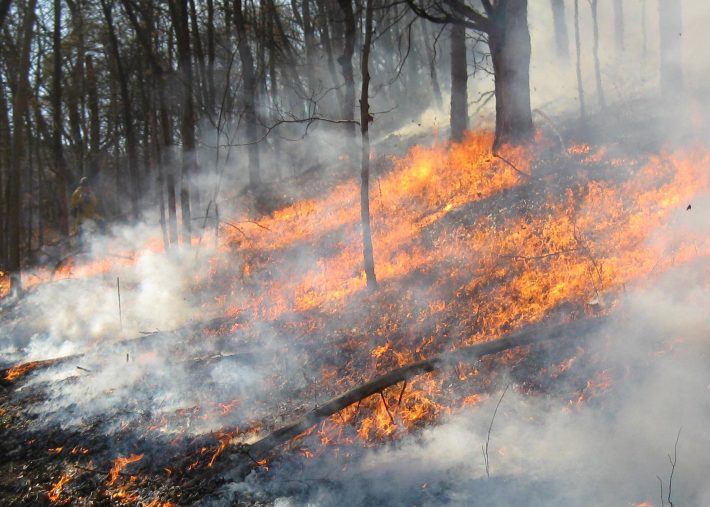Controlled fires don’t eliminate invasive tree
University of Florida press release
Researchers have, in the past, reintroduced fire to restore a forest without considering its effect on exotic species that have become invasive. But a recent study by a University of Florida researcher shows that fire actually increases the proliferation of species that harm the environment, which could cause millions of dollars in damage. Her findings were published in Journal of Applied Ecology today.

“Invasive species, be they plants, insects or animals, cause havoc in natural areas, because they often alter the ecosystem and outcompete native species for resources,” said Raelene Crandall, a University of Florida assistant professor in the UF School of Forest Resources and Conservation. “Understanding the mechanisms that allow exotic species to have rapid population growth is an important step in the process of controlling existing invasions and preventing future invasions.”
In a new study, published in the Journal of Applied Ecology, Crandall studied how controlled fires affect growth and survival of an exotic tree. “Several hypotheses have been proposed to explain why some exotic species become invasive,” she said.
“When invasive species invade a new habitat, they experience different rates of disturbances to their environment, competition for resources, and herbivory or plant-eating foes. These are just several of many reasons species are invasive in new habitats, but not in their natural habitat.”
Crandall’s team studied population dynamics of the Asian exotic tree-of-heaven (Ailanthus altissima) in oak-hickory forests in Missouri, which had not experienced fire in more than 50 years. The team applied insecticide to reduce plant-eating insects and other herbivores, removed neighboring plants to reduce competition and lit controlled fires. “We determined the effects of these treatments and their interactions on populations of tree-of-heaven by examining all stages of the plant’s life cycle from seeds to adults that bear seeds,” she said.
The study found that fire did not help reduce the growth rate of exotic species, Crandall said. “In fact, burning resulted in more seedlings and new clones, and thus a higher population growth rate,” she said.
The population growth rate was also high when neighboring competitors were removed, Crandall said. Both fire and removing competitors increases the amount of light available for new trees, so it is not surprising that both of these treatments would significantly increase populations of tree-of-heaven, she said. “Removing plant-eating insects had little effect on this tree likely because it is accustomed to high herbivory in its native range,” she said.
The researchers advise managers to use caution when reintroducing fire to habitats with tree-of-heaven invasions. Disturbances, such as fire, that reduce competition with neighboring plants may actually increase invasions, Crandall said. Fire is a natural part of most ecosystems and should be used for management, but when invasive species are present, managers should consider controlling or reducing the invasion first, she said.
Furthermore, when determining the effects of disturbances and biological interactions on invasive species, all stages of the life cycle should be considered, Crandall said. Examining only adult survival or number of new seedlings will not tell the whole story, she said.
“We found that fire does reduce survival of some intermediate-sized adults, but it also greatly increased seedlings and new clones. The bad outweighs the good and increases the growth rate,” Crandall said. “We would not have known this if we had only examined one stage of the life cycle.”
Read the full article (freely available for a limited time):
Crandall RM, Knight TM. Role of multiple invasion mechanisms and their interaction in regulating the population dynamics of an exotic tree. J Appl Ecol. 2017;00:1–10.DOI: 10.1111/1365-2664.13020
Media contact:
Beverly James, Public Relations Director, University of Florida; Email: beverlymjames@ufl.edu, Tel: +1 (0)352 273 3566
Like what we stand for?
Support our mission and help develop the next generation of ecologists by donating to the British Ecological Society.